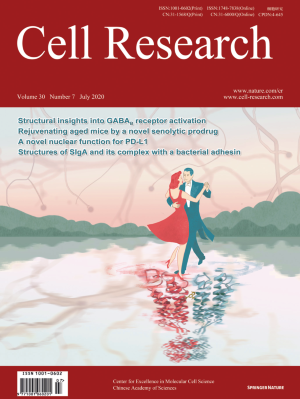
Advanced Search
Submit Manuscript
Advanced Search
Submit Manuscript
Volume 30, No 7, Jul 2020
ISSN: 1001-0602
EISSN: 1748-7838 2018
impact factor 17.848*
(Clarivate Analytics, 2019)
Volume 30 Issue 7, July 2020: 556-557
A β-galactosidase kiss of death for senescent cells
Xiaoqian Liu1,2,3 , Juan Carlos Izpisua Belmonte4 , Weiqi Zhang1,5,6,7,8,* , Guang-Hui Liu1,3,7,8,*
1Advanced Innovation Center for Human Brain Protection, and National Clinical Research Center for Geriatric Disorders, Xuanwu Hospital Capital Medical University, 100053 Beijing, China;In a recent paper published in Cell Research , Cai et al. report development of the prodrug senescence-specific killing compound 1 (SSK1), which specifically clears SA-β-galactosidase-positive senescent cells both in vitro and in vivo. By activation of the p38 MAPK pathway and induction of cellular apoptosis, SSK1 functions broadly to attenuate chronic inflammation and improve physiological function.
https://doi.org/10.1038/s41422-020-0325-6